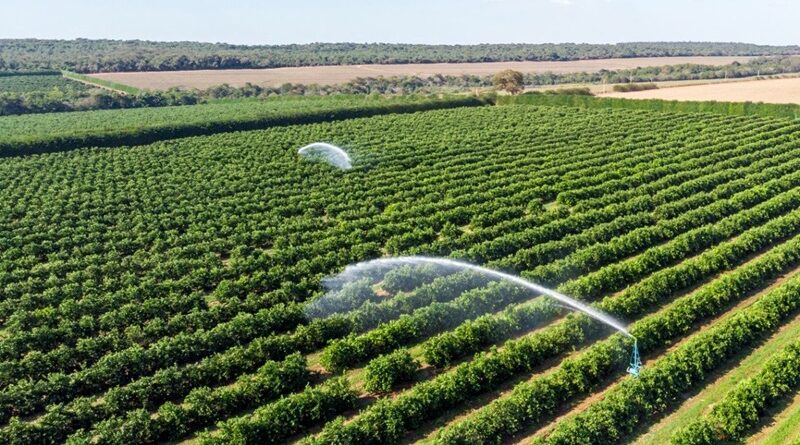Elevating Farming Excellence with Best Management Practices in Agriculture
In the quest for sustainable and profitable farming, adhering to best management practices (BMPs) in agriculture is paramount. These practices encompass a range of strategies designed to increase crop yields, protect environmental resources, and ensure the long-term viability of farming operations. With the integration of farm management software, implementing these practices has become more efficient, allowing farmers to optimize their operations with precision and insight.
Core Principles of Best Management Practices in Agriculture
BMPs in agriculture are founded on principles that balance productivity with environmental stewardship. Key areas include:
- Soil Conservation: Implementing practices that prevent soil erosion and degradation, such as cover cropping and conservation tillage.
- Water Management: Optimizing water use through efficient irrigation systems and water conservation measures to safeguard this precious resource.
- Nutrient Management: Ensuring the appropriate application of fertilizers to meet crop needs without causing nutrient runoff that can harm waterways.
- Pest Management: Utilizing integrated pest management (IPM) strategies to control pests with minimal chemical use, promoting biodiversity and reducing pesticide reliance.
- Crop Diversity: Encouraging crop rotation and diversity to enhance soil health, reduce pest pressures, and increase farm resilience.
Challenges in Implementing Best Management Practices
While the benefits of BMPs are clear, their implementation can be challenging due to:
- Complexity: Managing the various aspects of BMPs requires detailed knowledge and constant monitoring.
- Data Overload: Effective BMP implementation is data-driven, relying on a wealth of information from soil tests to weather patterns.
- Adaptability: Farms must adapt BMPs to their specific conditions, which can vary widely even within a single operation.
The Role of Farm Management Software in BMP Implementation
Farm management software has become an indispensable tool in applying BMPs efficiently and effectively:
Centralized Data Management
Farm management software serves as a repository for all farm data, from soil health indicators to crop performance metrics. This centralized data management simplifies the implementation of BMPs by providing easy access to the information needed for informed decision-making.
Precision Agriculture Tools
By integrating precision agriculture tools, farm management software enables the precise application of water, fertilizers, and pesticides, directly aligning with BMPs for nutrient and pest management. This not only enhances crop health and yields but also minimizes environmental impact.
Resource Optimization
The software provides detailed insights into resource use, helping farmers optimize their inputs and operations in line with BMPs. This includes water-saving irrigation schedules, efficient machinery use to reduce fuel consumption, and targeted fertilizer applications to prevent runoff.
Monitoring and Reporting
Continuous monitoring of farming practices and their outcomes is crucial for BMPs. Farm management software automates the collection and analysis of operational data, facilitating regular reporting on BMP compliance and effectiveness.
Adaptability and Customization
Farm management software offers the flexibility to tailor BMPs to the unique needs and conditions of each farm. Customizable plans and schedules can be easily adjusted as conditions change, ensuring that BMP implementation remains dynamic and responsive.
Future Directions in Best Management Practices
As technology evolves, so too will the capabilities of farm management software, offering even more sophisticated tools for BMP implementation. Future developments may include advanced AI for predictive analytics, IoT devices for real-time monitoring, and enhanced integration with external data sources for comprehensive environmental impact assessments.
Benefits of Implementing BMPs in Farming
In today’s world, where the demand for food is constantly increasing due to a growing population, it has become crucial to maximize agricultural productivity. Best Management Practices (BMPs) play a vital role in achieving this goal. These practices are designed to optimize the use of resources and minimize negative impacts on the environment while maintaining high yields. Let’s take a closer look at some of the key benefits of implementing BMPs in farming.
-
Improved Soil Health:
One of the main advantages of using BMPs is that it helps in improving soil health. By following proper land management techniques like crop rotation, cover cropping, and reduced tillage, farmers can maintain healthy soil with a balanced nutrient composition. This leads to increased water retention capacity and better root development, resulting in healthier crops.
-
Increased Yields:
By implementing BMPs such as precision farming techniques and nutrient management plans, farmers can significantly increase their crop yields. Precision farming involves using technology such as GPS mapping and soil sensors to accurately apply fertilizers, pesticides, and irrigation only where needed, thereby reducing waste and maximizing yield potential. Nutrient management plans help ensure that crops receive an adequate amount of nutrients at all stages of growth, leading to optimal yield levels.
-
Reduced Production Costs:
BMPs also contribute towards reducing production costs for farmers. Through practices like integrated pest management (IPM), farmers can effectively control pests without relying solely on expensive chemical pesticides. Similarly, conservation tillage techniques save time and labor costs while also minimizing fuel usage by reducing tractor passes over fields.
-
Reduced Environmental Impact:
With increasing concerns about environmental sustainability in agriculture, adopting BMPs has become more critical than ever before. These practices help reduce harmful effects on soil health, water quality, biodiversity loss, air pollution caused by traditional farming methods like excessive tilling or overuse of chemicals.
-
Increased Resilience to Climate Change:
Climate change has brought challenges such as unpredictable weather patterns, droughts, and floods that can severely impact crop production. By implementing BMPs such as soil conservation practices and water management techniques, farmers can build resilience against these climatic changes. For example, cover cropping helps prevent soil erosion during heavy rainfall, while water-efficient irrigation methods help conserve water during periods of drought.
The benefits of implementing BMPs in farming are numerous and varied. From improving soil health to reducing production costs and minimizing environmental impacts, these practices play a crucial role in maximizing agricultural productivity. It is essential for farmers to adopt these best management practices to ensure long-term sustainability and profitability for themselves and the agriculture industry as a whole.
Conclusion
Best management practices are the cornerstone of modern, sustainable agriculture, offering a roadmap to enhanced productivity, environmental protection, and economic viability. With the support of farm management software, the implementation of these practices becomes more accessible and effective, empowering farmers to achieve their goals with precision and foresight. As we continue to innovate and embrace new technologies, the potential of BMPs to shape a more sustainable future for agriculture is boundless, promising a harmonious balance between farming success and environmental stewardship.



